The invention of the first photographic process, the ‘daguerreotype’, was announced in 1839. This ‘direct positive’ process produced a unique image that was often kept in a case, like a precious jewel. Later that year William Henry Fox Talbot introduced his negative-to-positive paper technique. The ‘calotype’ would become the basis of almost all of Victorian and Edwardian photography and continued until the invention of the digital camera.
As Victorian photography developed, so did its role in society and culture. Family photographs quickly became an important part of Victorian life; a tool for creating memories, legacies and identities.
All of these old photographs come from the National Trust which looks after collections across its properties and provide a good example of how to date Victorian and Edwardian photographs.
Do you want to find out more about how to care for the frames on your old family photographs? Don't miss this guide from Homes & Antiques
Victorian family group photograph, c1890
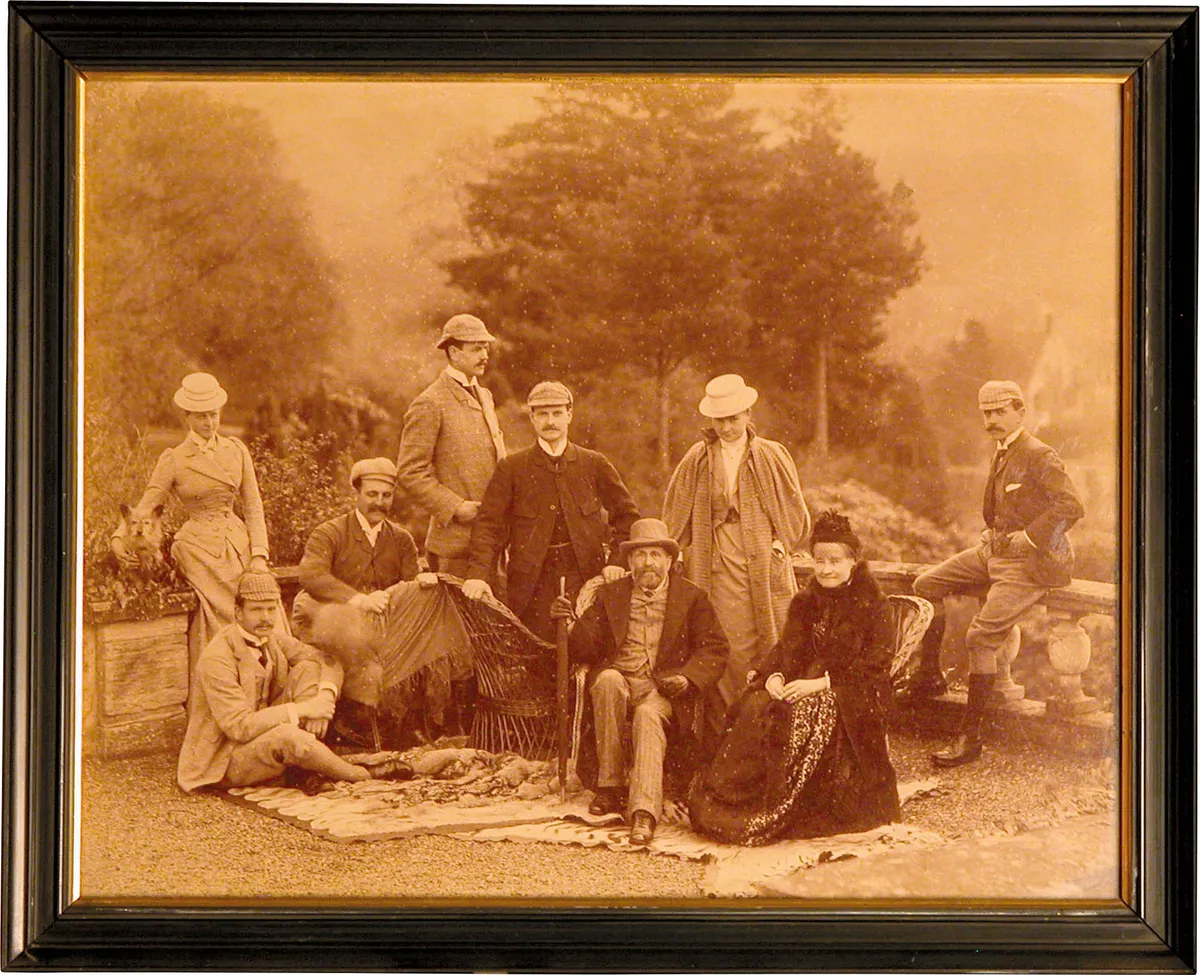
Family portraits such as this were common types of Victorian photographs among the social elite. Rather than the family going to a studio, this photographer was called out to the family estate where sitters could be photographed on their land and with their belongings.
- Animal skins on the floor were likely placed to convey worldliness. To our modern eyes, animal skins in Victorian photographs also suggest connections to colonial territories such as India.
- Nine members of the Hussey family are meticulously posed on various levels in order to achieve an aesthetically balanced composition that also denotes seniority within the family.
- Gazes are not all directed straight to camera, in order to encourage movement and dynamism in the photograph.
- Animals (here a pet dog) were much loved members of the family, and are often included in Victorian photographs.
Victorian carte de visite, c1890
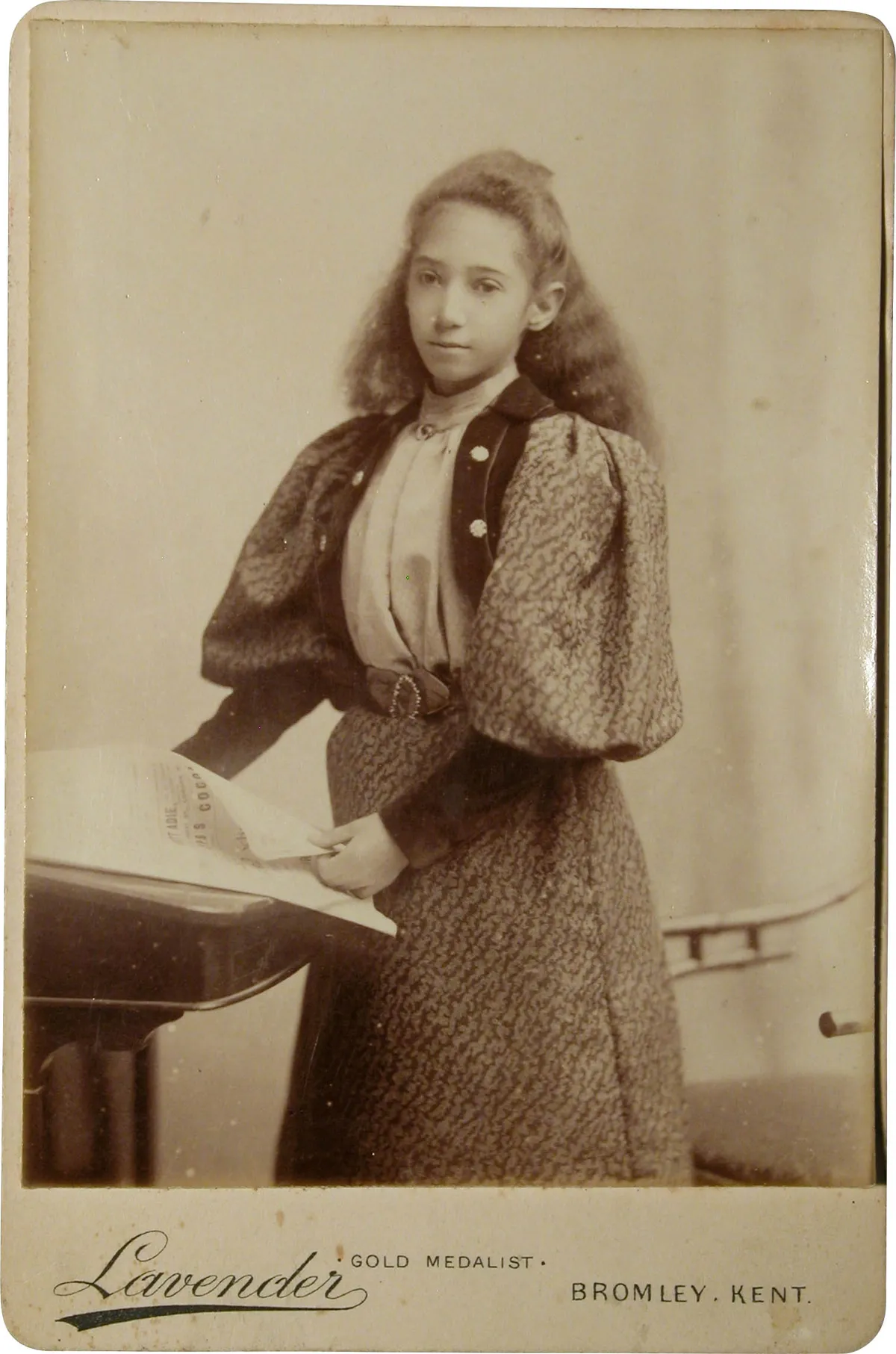
Carte de visite photographs, literally ‘calling cards’, were another popular kind of Victorian photograph from the 1860s, not least because of their cost. Made using a four-lens camera, which captured eight negatives on a single plate, each image was cut up and mounted onto standard- size cards. Cartes de visite were comparatively inexpensive to sit for and they were widely collected and traded.
- Printed text on an image in Victorian photographs usually relates to the photography studio. In this picture, it refers to Edgar Davey Lavender, who operated a studio in Bromley from 1891. Finding out when a photographer operated is useful for dating Victorian images. You can find a list of Victorian photographers in Britain and Ireland on this website.
- It seems that photographer Edward Davey Lavender won a gold medal for his work, likely in 1889, judging from a more detailed inscription on the reverse.
- The young woman stands at a lectern holding sheet music. Although props were sometimes carefully selected, this choice doesn’t necessarily mean that she was musical. It may just have been one of the studio’s standard props.
Edwardian school photograph, 1902
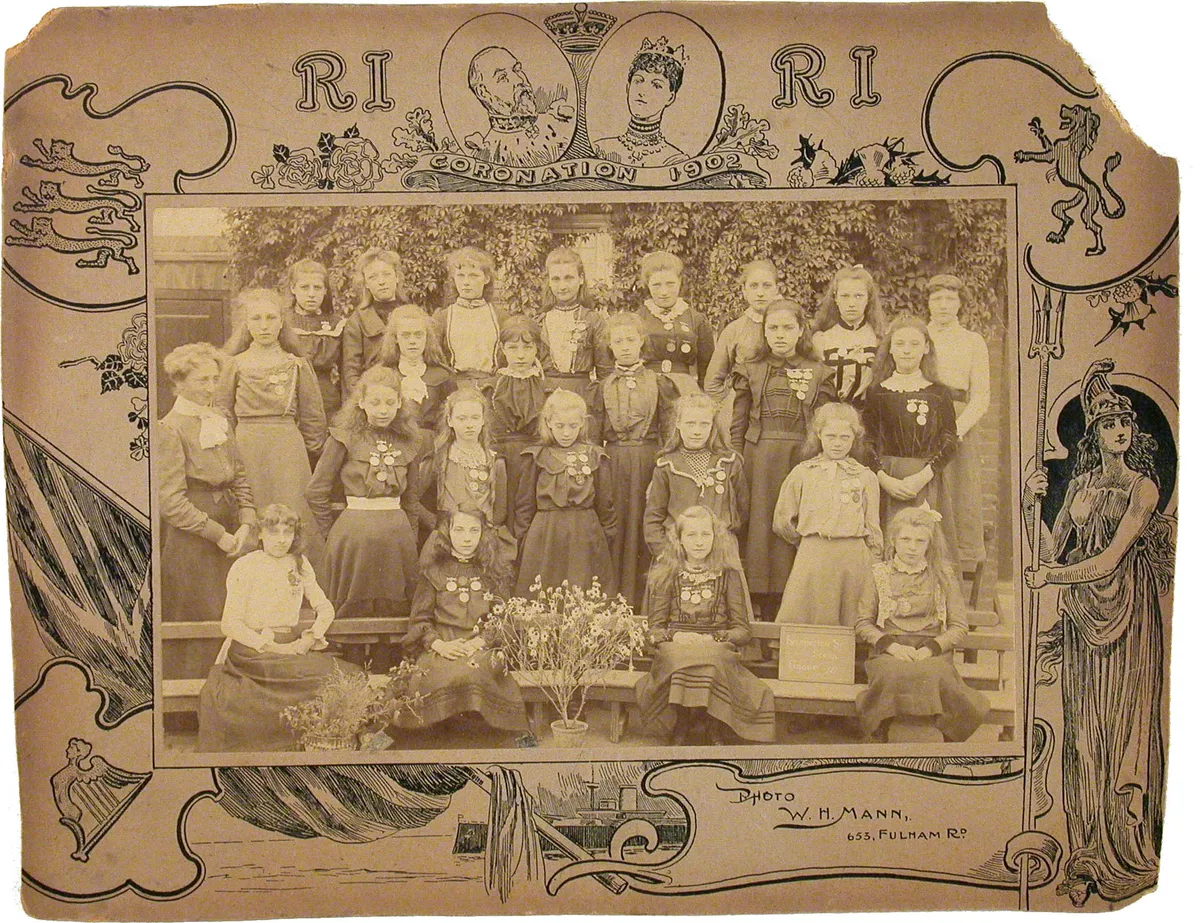
Taking photographs to commemorate a special occasion has long been a common use of the medium, and this continues to be the case today. This image of a school group at Everington Street School, Fulham, celebrates the coronation of Edward VII on 9 August 1902.
- This detailed border would have been provided by the photography studio, emphasising the photograph’s commemorative purpose and presenting it as a souvenir.
- The photographer is William Henry Mann of Fulham. Researching the photographer can help you date an image. You can find out more about photographers working in London during the 19th century at PhotoLondon.
- Children are dressed in their best dresses as a mark of respect and wearing medals earned for good school attendance.
Edwardian beach photograph, c1905

Trips to the seaside were a popular leisure activity around the turn of the 20th century, enabled by the railway boom. The advent of smaller, portable cameras made it easier to photograph days out in Edwardian times – especially in sandy and wet environments.
- Considerations of social class are clear, as three children from the Bankes family who lived on the Kingston Lacy estate are taken on the trip by two family staff.
- Modern-style swimwear evolved rapidly during the 1910s and 1920s, which means earlier beach photographs are simpler to date.
- Beach tents were intended to provide privacy and relief from the sun, which were also supplied by the children's wide-brimmed hats.
Autochrome photograph, c1915
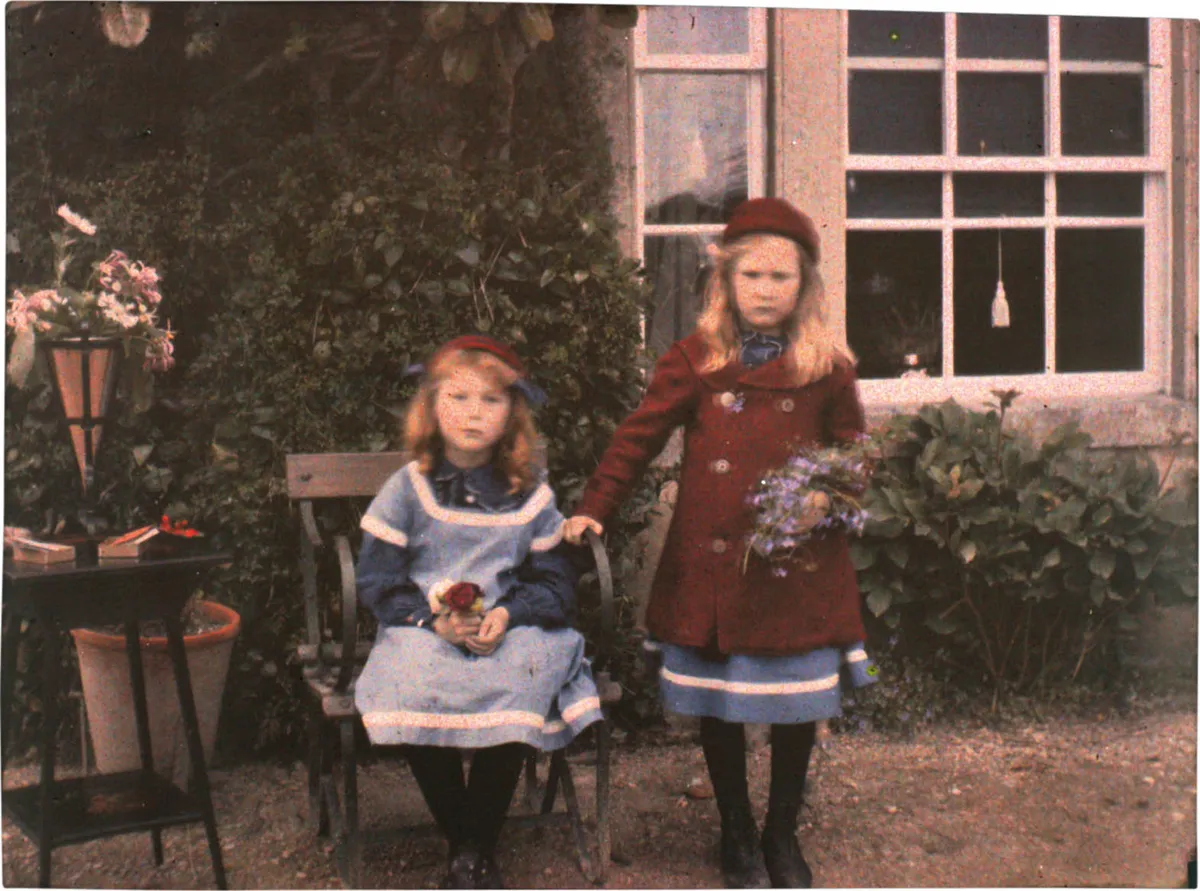
Autochromes are colour photos on glass plates. The process was the first photographic colour technique, patented in 1903 and marketed in 1907 by cinematic pioneers the Lumière brothers. It was the main method of producing colour photography from the Edwardian times until the late 1930s, when colour film became commercially available.
- Autochromes are very sensitive to light. Many of those that survive today have colours that have dulled.
- If you examine an autochrome using a magnifying glass, you can see coloured dots. These are grains of potato starch that have been dyed red, green and blue, and together make up the full-colour image.
- Colourful flowers and plants were a popular subject for this early form of colour photography. These girls’ outfits may have been chosen for the same reason.
First World War wedding photograph, c1914
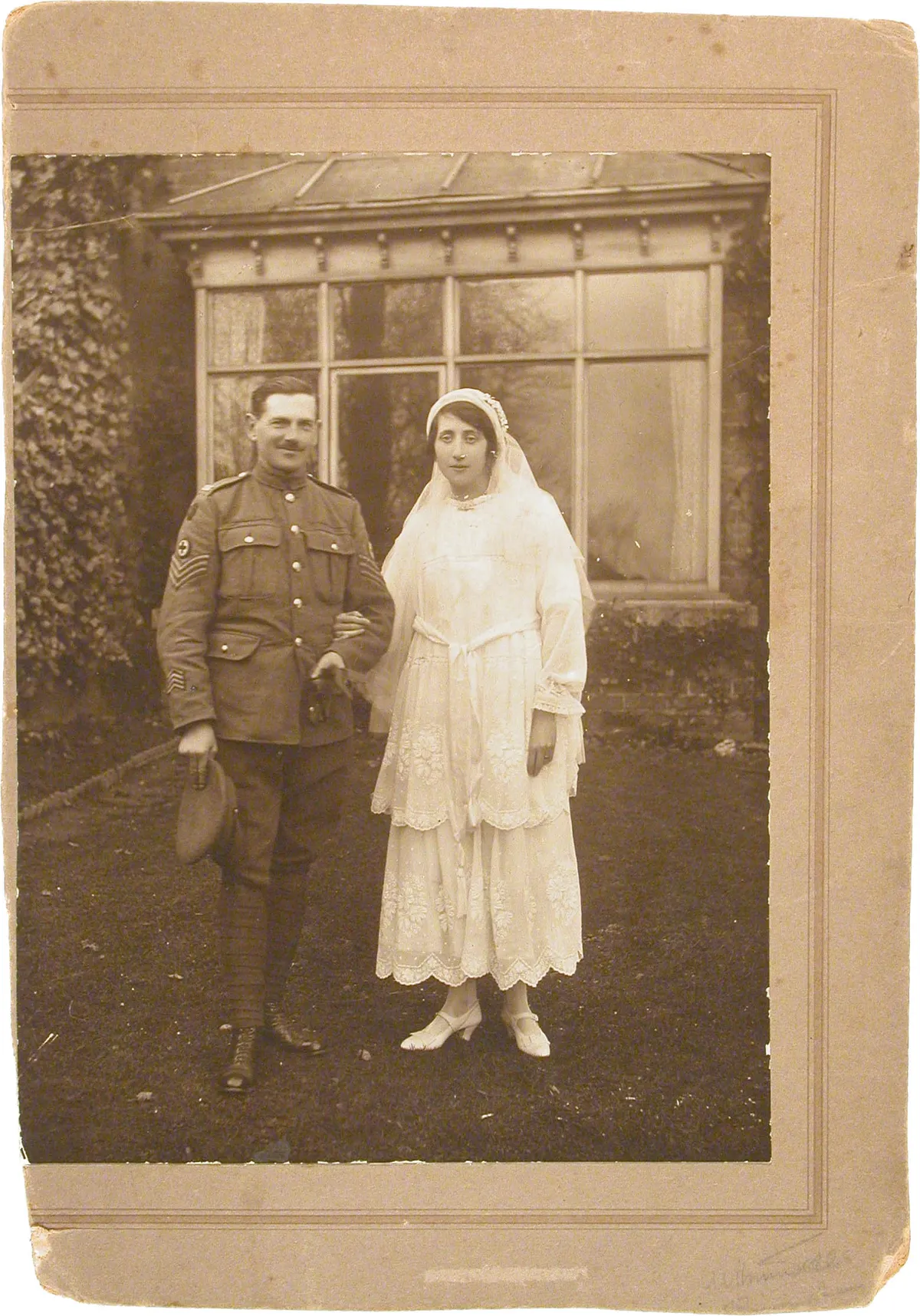
The First World War transformed photography’s social roles. During the conflict, vast numbers of photos were made of soldiers and their loved ones, to leave as a memento or to take to the Front. In addition, popular photography, facilitated by the rise of inexpensive and easy-to-use cameras, increased in the earliest years of the 20th century. As such, wartime images feature a great range of society.
- The groom wearing his uniform emphasises the pride taken in Army postings at the beginning of the war.
- The location appears to be a domestic residence, likely the home of the bride and groom.
- The groom’s smile shows a shift in trends away from previously serious expressions, aligned with a move towards more candid imagery.
- The border of the mount is incomplete – was the mount-card repurposed?